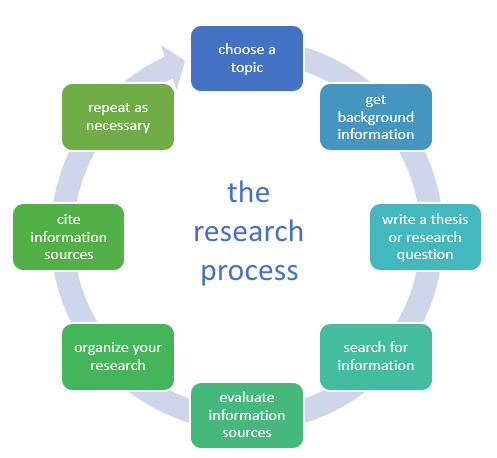2.1: The Research Process
- Page ID
- 185959
The Research Process
Research is frequently cited as being a frustrating process for students. We've heard that research seems to take longer than it should and that finding the exact thing you want is really difficult. And sometimes, just when you think you are getting somewhere, you realize you need to adjust your topic.
Part of the reason research can seem so frustrating is that people tend to approach it as a linear process- you might think that first you pick a topic, then you perform some searches, then you identify your resources, and then, finally, you move onto writing the paper. That process is linear because it goes from one step to another in a straight line, like this:
X choose a topic → search → identify resources → write paper
In reality, research doesn't really work like that! You'll have to go backwards, repeat some steps, and even repeat the entire process in order to do it right. Research is actually an iterative process, meaning that it is a circular process where you repeat steps more than once. It looks a lot more like this:

Image created and shared by CCC Library
An iterative process if one that repeats itself. Iteration is the repetition of a process in order to generate multiple outcomes. Each repetition of the process is a single iteration. When researching, each unique search is an iteration.
So why is it iterative (circular and repeating) and not linear? Because you are learning more information about your topic as you research! You figure out what isn't working, but also discover new ideas and concepts that may help you research more effectively. Basically, the information you find while you research is going to change the way you think about your topic and inspire new research strategies.
If you are searching iteratively by repeating research steps as necessary, you'll save yourself a lot of frustration. The iterative search process has more steps than the linear search process, but those extra steps actually save you time because you give yourself the opportunity to catch problems before it's too late. You'll learn plenty of tricks in LIB101 to make your research process more efficient; knowing that the research process is iterative is the first one!
Watch this short video for another explanation of the research cycle:

